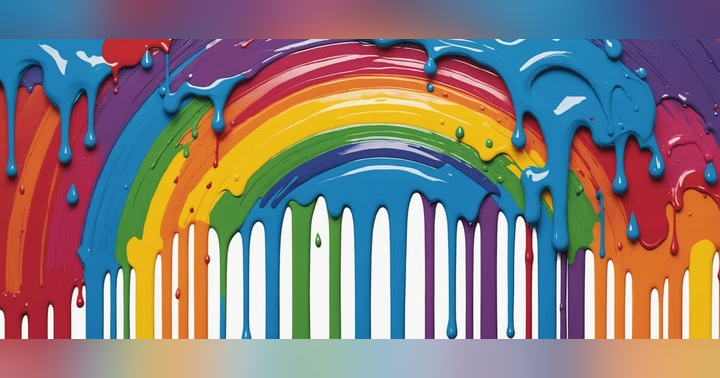Unmasking Gay Shame: Identity, Trauma, and the Lessons of The Velvet Rage

Feel the Gay Rage, Baby
Gay shame often operates in silence. It’s not simply a discomfort about being different—it's the deeply internalized belief that queerness is a defect, not an identity. This shame doesn't begin with adulthood or coming out; it starts in childhood, when many queer boys first learn that their desires aren't welcome, let alone celebrated. And for many, this shame follows them into every stage of life, mutating, manifesting, and complicating relationships, self-worth, and identity.
Dr. Alan Downs' The Velvet Rage confronts this reality with precision, outlining how shame shapes the inner lives of gay men and offering a roadmap toward healing. His three-stage model traces the emotional evolution from shame to authenticity, providing language for the silent battles many face but rarely articulate.
The Birth of Shame and the Construction of the Pseudo-Self
In a heteronormative world, most straight boys grow up with their developing attractions affirmed by family, media, and society. They learn early that their desires are natural and deserving of recognition. Gay boys, however, often learn the opposite. Whether through subtle social cues or overt rejection, they’re taught to suppress their truth.
To survive, many adopt personas that earn approval while concealing their authentic selves. This is what Downs calls the creation of the pseudo-self: a carefully curated identity formed not from self-expression, but self-protection. While this façade may earn external validation, it leaves the internal self malnourished.
Without authentic validation, emotional development stalls. Many gay men carry this emotional underdevelopment into adulthood, struggling to connect honestly with others or even themselves. Unable to generate internal self-worth, they often depend on external approval to feel seen, which sets the stage for an exhausting pursuit of perfection.
Stage One: Overwhelmed by Shame
The first stage of shame outlined in The Velvet Rage begins when a gay man becomes aware of his difference and of the social penalties that come with it. Rather than leading to self-acceptance, this realization often triggers fear and repression.
To cope, many engage in splitting: maintaining separate identities—one public and sanitized, the other private and hidden. This dual existence reinforces the idea that their true selves are dangerous or unworthy. Even after coming out, these early coping mechanisms can persist, undermining trust in others and in oneself.
Romantic relationships in this phase tend to be intense but short-lived, shaped by unprocessed shame and the craving for validation. These bonds are often a gay man’s first attempt at connecting his identity to love and desire, but they’re also frequently laced with emotional volatility and trauma.
Stage Two: Compensating for Shame
In the second stage, shame no longer hides in the shadows, but drives behavior. Many gay men attempt to compensate for their internal wounds by achieving success, cultivating beauty, or seeking status. These achievements may offer fleeting relief, but they rarely touch the core of their emotional pain.
Relationships in this stage can become transactional. Validation is sought through sex, admiration, or control, not out of connection, but as a salve for low self-worth. When relationships fail, the cycle often repeats: a new partner, a new high, followed by disillusionment.
Some abandon relationships at the first sign of discomfort. Others pursue them relentlessly, needing constant reassurance. Without a model for healthy gay love, these men often struggle to believe long-term intimacy is possible. The result is a growing sense of relationship hopelessness, defined as a belief that love is always out of reach.
This stage is also marked by addiction to external sources of validation whether materialism, compulsive sex, or substance use. What looks like confidence is often a mask for an unhealed wound. The challenge is not to perfect the performance but to question why the performance feels necessary at all.
Stage Three: Cultivating Authenticity
The final stage is not one of perfection, but liberation. As the need for external approval fades, gay men in this phase begin reclaiming their lives on their own terms. There's a quiet clarity that emerges with the sense that the strategies once used for survival no longer serve them.
This is a period of reflection and reconstruction. The familiar bars, casual hookups, and curated identities may lose their appeal. Many step away from "the scene" not out of shame, but because it no longer offers nourishment.
Instead, they begin pursuing passions that offer intrinsic joy. Downs defines passion as the repeated experience of joy in doing something not because it impresses others, but because it feels good in the doing. Whether it’s cooking, painting, traveling, or simply being in nature, the focus shifts from proving worth to living meaningfully.
Downs outlines the following three key practices to support this stage:
- Make space for joy.
- Pay attention to when joy arises.
- Repeat the actions that cultivate it.
Healing Relationship Trauma
Part of cultivating authenticity involves reckoning with past wounds, especially those formed in romantic relationships. Downs identifies four core types of relationship trauma: betrayal, abuse, abandonment, and ambivalence. Each leaves scars, but betrayal can be especially devastating, often reinforcing the belief that intimacy is dangerous or unattainable.
Meanwhile, ambivalent relationships, where affection is inconsistently given or paired with criticism, may seem less severe but are just as damaging. They teach instability, leaving partners emotionally worn down and distrustful.
Healing requires two steps: recognizing that trauma occurred and refusing to let it define one’s worth. These wounds are not evidence of personal failure, but reflections of a deeper pattern, one that can be broken with care, introspection, and self-compassion.
Reframing the Past, Reclaiming the Present
The emotional wounds many gay men carry often trace back to early moments of unacknowledged identity and conditional love. These formative experiences when authenticity was met with silence, shame, or rejection can distort how one views self-worth well into adulthood.
By engaging with The Velvet Rage’s insights, gay men can begin to untangle the internalized shame that has quietly shaped their lives, learning to see those early struggles not as reflections of personal flaws, but as consequences of a society that failed to fully embrace them. In doing so, there is an opportunity to reconnect with the inner child who once felt invisible or unworthy and to offer him the compassion and validation he always deserved.
This reframing isn’t about rewriting history but about reclaiming power in the present. Healing means choosing authenticity over performance, self-acceptance over external validation, and community over isolation. As more gay men embrace this journey, they don’t just lighten their own burdens—they illuminate the path for others, creating space for collective healing, joy, and a future rooted in pride rather than shame.
And remember: every day is all we have, so you've got to make your own happiness.
For more information on this topic, listen to Episode 146. The Velvet Rage.
Tune into your favorite podcast player every Tuesday for new episodes of A Jaded Gay.


















